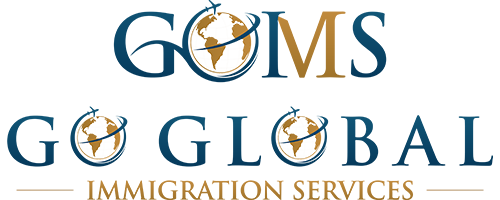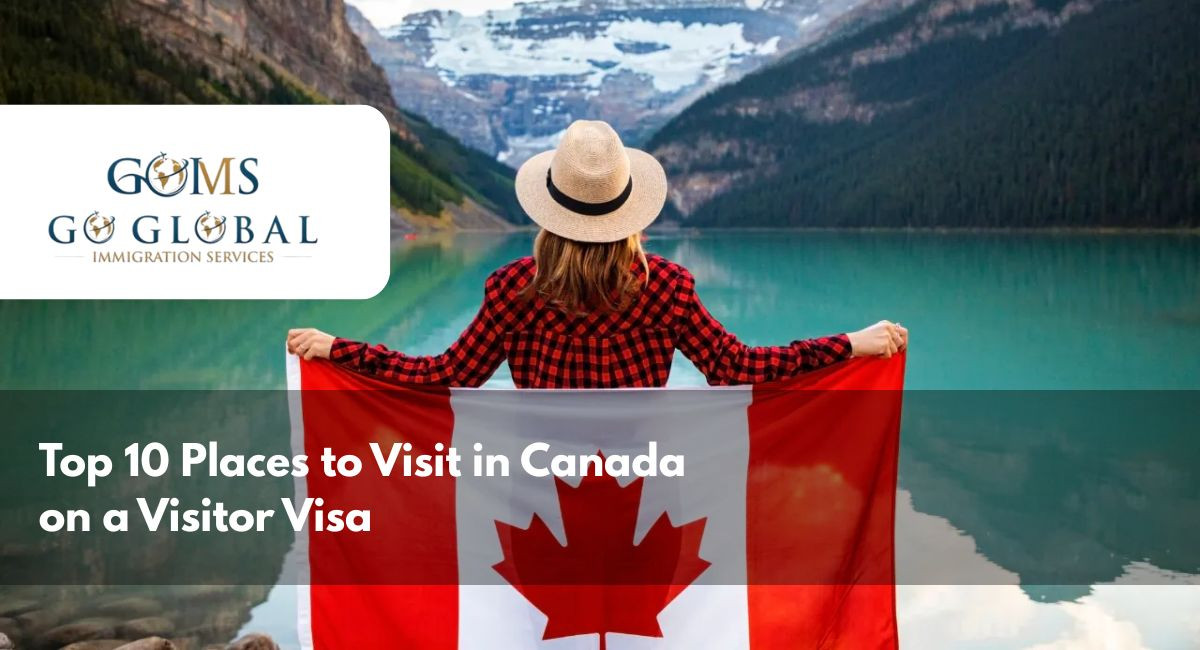Exploring Canada on a visitor visa opens the door to some of the world’s most unforgettable destinations. Canada is known for its striking contrasts—where expansive wilderness meets dynamic urban centers, creating a destination that’s as diverse in geography as it is in culture. In 2023 alone, over 23 million international tourists visited the country, confirming its status as a global travel favorite.
This curated list highlights the top 10 destinations in Canada, selected for their popularity, accessibility, and international appeal. Each one promises an experience worth every moment of your visitor visa stay.
Banff National Park, Alberta
Established in 1885, Banff is Canada’s first national park and part of a UNESCO World Heritage Site.
Lake Louise and Moraine Lake, renowned for their vivid turquoise waters, welcome more than 4 million visitors each year, making them two of the most visited natural attractions in Canada.
Year-round activities include hiking and canoeing in summer and skiing in winter.
Wildlife such as grizzly bears, elk, and mountain goats roam freely in their natural habitat.
The Banff Upper Hot Springs provide visitors with the opportunity to experience therapeutic mineral waters while enjoying expansive views of the surrounding alpine landscape.
Niagara Falls, Ontario
One of the world’s most visited natural wonders, drawing ~12 million tourists each year.
Horseshoe Falls, located on the Canadian side of Niagara, is the largest of the three waterfalls, with an average flow rate of approximately 2,800 cubic meters of water per second.
Visitors can ride the Hornblower boat into the mist or enjoy panoramic views from the Skylon Tower.
The Niagara region boasts 90+ wineries, making it a hotspot for wine tourism.
Clifton Hill offers family-friendly attractions that complement the natural spectacle.
Vancouver, British Columbia
Consistently ranks in the Top 10 of the Mercer Quality of Life Index.
Stanley Park (larger than NYC’s Central Park) draws millions for cycling, walking, and picnics.
With 52% of residents being non-native English speakers, Vancouver is a hub of multicultural cuisine and culture.
Nearby attractions include Grouse Mountain and the Capilano Suspension Bridge.
Hosted the 2010 Winter Olympics, boosting its global reputation.
Québec City, Quebec
Old Québec is a UNESCO World Heritage Site preserving 17th-century French architecture.
Dominating the skyline with timeless grandeur, the Château Frontenac stands as the world’s most photographed hotel and a symbol of Québec City’s historic charm.
Over 5 million tourists annually stroll its cobblestone streets and fortified walls.
Among Québec’s winter highlights is the legendary Winter Carnival—one of the oldest and largest of its kind globally, drawing visitors with its vibrant parades, ice sculptures, and festive spirit.
A unique blend of French heritage with Canadian hospitality creates a European vibe in North America.
Toronto, Ontario
Canada’s largest city, with a metro population of 6.7M+.
The CN Tower (once the world’s tallest free-standing structure) welcomes 2M+ visitors annually.
140+ languages are spoken, making Toronto among the most culturally diverse cities globally.
Popular attractions: Royal Ontario Museum, Ripley’s Aquarium, Toronto Islands.
The Toronto International Film Festival (TIFF) secures its place on the global cultural map.
Jasper National Park, Alberta
The largest national park in the Canadian Rockies, covering 11,000+ sq km.
The Columbia Icefield lets visitors walk on ancient glaciers.
Designated as a Dark Sky Preserve, Jasper offers some of the clearest and most awe-inspiring stargazing conditions on the planet.
Wildlife sightings include moose, wolves, and black bears.
The Jasper SkyTram offers sweeping alpine views.
Montreal, Quebec
The second-largest French-speaking city worldwide, after Paris.
Hosts the Montreal International Jazz Festival, attracting 2M+ visitors.
Renowned for its food culture, from poutine to smoked meat sandwiches.
Old Montreal enchants with cobblestone streets, historic architecture, and riverside charm.
A dynamic mix of tradition and modernity makes Montreal a cultural capital.
Whistler, British Columbia
A world-famous ski destination, host of the 2010 Winter Olympic events.
Spanning over 8,100 acres of terrain, Whistler Blackcomb holds the title as North America’s largest ski resort—offering unmatched variety for skiers and snowboarders of all levels.
In summer, it transforms into a hub for mountain biking and alpine hiking.
The Peak 2 Peak Gondola holds world records for its panoramic views.
Ottawa, Ontario
Canada’s capital city, home to Parliament Hill and the Changing of the Guard.
The Rideau Canal (UNESCO World Heritage Site) doubles as the world’s largest skating rink in winter.
Key museums: National Gallery of Canada and Canadian Museum of History.
National celebrations like Canada Day draw thousands to the city.
Set along the banks of the Ottawa River, the city seamlessly blends its role as Canada’s political heart with the serene beauty of its natural surroundings.
Prince Edward Island (PEI)
Canada’s smallest province, famous for red-sand beaches and coastal lighthouses.
Prince Edward Island is internationally celebrated for its Anne of Green Gables legacy, drawing literary fans to its storybook landscapes and heritage sites.
Produces 80%+ of Canada’s potatoes, a key part of its economy.
PEI’s peaceful landscapes and rolling green hills make it a serene getaway.
Frequently Asked Questions (FAQ)
1. How long can I stay in Canada on a visitor visa?
AMost visitors are allowed to stay up to 6 months per entry, though the final duration is determined by border officers.
2. Do I need a visitor visa to see these places in Canada?
Yes, unless you’re from a visa-exempt country. For example, Indian citizens must apply for a Temporary Resident Visa (TRV).
3. Which is the most visited tourist attraction in Canada?
Niagara Falls — welcoming ~12 million tourists annually.
4. Can I travel across provinces with a visitor visa?
Yes, your visa allows travel across all provinces and territories during your permitted stay.
5. What is the best time of year to visit Canada?Summer (June–August): Best for national parks, outdoor festivals, and city tours.
Summer (June–August): Best for national parks, outdoor festivals, and city tours.
Winter (December–February): Best for skiing, snowboarding, ice festivals, and experiencing Canada’s famous winter landscapes.

